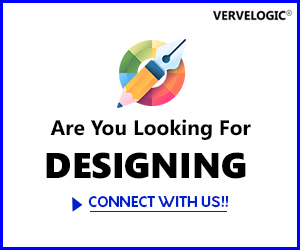Top 07 Principles of Design And How to Utilize Them?

What are the principles of design? How to utilize principles of design? What makes a great design? Why should you know all the principles of design? Whether you are a graphic designer or looking for designs for your company. You must know all the principles of design. When you know the principles of design you will be able to come up with effective designing for your clients or company.
All 07 principles of design are the rules that will help you with multiple things such as designing graphics, branding for a company, infographics, or logo designs in an effective way. Implementing all the principles of design is peculiar for every designer. The fundamental principles of design are:
- Balance
- Alignment
- Contrast
- Repetition
- White Space
- Movement
- Proportion
The 07 principles of design make you a professional designer and make you deliver the best services of design. The best part of all the principles of design mentioned in this blog is from our graphics designer, logo designer, and branding experts. Here you will get ideas and a professional guide to have the best design. Continue reading the article to explore the best designs and principles of design.
The principles of the designs are just like the ingredients to create the most effective design for logos or other aspects needed by businesses for digital or print. If the principles of design are followed by the designer then you get an insurmountable design that demystifies & describes the businesses with a single look. That is among the top reasons why you should opt for the best logo design companies for your business. The fundamental principles of design are Emphasis, Balance, Contrast, Movement, Alignment, Proportion, White Space & Repetition.
Design & art can be differentiated on the basis of their purpose. The design has a purpose whereas the art doesn’t usually have any purpose & is created by the imagination of the artist. Yes, design is also about imagination & creativity, but it also serves a purpose like being a cynosure or a point of focus for potential people. If you are a new designer then you must have also combined many colors to come up with new ideas, but mostly it is muddled, unfinished, or not usable. That is why following the fundamentals of design is crucial to creating an effective design.
So, sticking to the defined rules can help in stable & balanced design which can help in various aspects of business & in direct connectivity with the people. This article will help you with a perfect definition of the 7 basic principles of design, so you know which factors you need to work on for your next design.
07 principles of design; make your design speak loudly
Below are the top 07 principles of design that will help you make your design speak loudly- by utilizing the principles of design. You can deliver the best services to your business customers or design one for your company. Designing is a creative task therefore you must implement all the principles of design. So, that you can make creative and meaningful designs and deliver the services your customers are looking for.
Every design is different from the other but every design that can be considered a masterpiece follows certain design principles. If you want to create a great logo for any visual entity for your organization, the following 7 principles of designing can be very helpful. Let us see what are the top 07 principles of design.
1. Emphasis
The first principle of design out of 07 principles is emphasis. Emphasis is a strategy designers create a focal point. What element do you want to show in your design? Is your company name important you want people to focus on?
The focal point can be an area of content, an image, a bottom, or a link. Emphasis helps designers have the best design. Whenever while creating a design, you should find out its main purpose. What information the people should know through the design? Is it about the business or about the audience? Creating such outlines helps you organize the information while creating the design, so it can communicate with the audience in the same way it wants.
If the business’s name is essential information, then place it in the center of attraction or the biggest element on the poster or put it in the strongest boldest type. Learning about color theory will help you find the right color combination to make the business name pop. Similarly, you need a blueprint before starting to create a building, you also need a proper outline or a clear idea to create an amazing design.
2. Balance & Alignment
Every element that you add to the design adds weight to the design. This weight can come from texture, color & size. So, you should consider these elements before adding them to the design. Consider this as your interior design as you do not want to crowd your space with unwanted furniture. Balancing is the key as it can help people stick to your design. Just like symmetry creates balance, you should also consider the weighted elements before using them. Symmetrical designs will always help be more pleasing, bolder & visual designs that can be used to serve the defined purpose.
3. Contrast
If you want your design to pop up then Contrast is the one aspect that will help you with it. Right contrast in the design helps it stick in the minds of the people. It also helps in creating space & differences between elements in your design. If the background of your design, you want to be significantly different from the color of your elements so both of them can blend together & make it readable.
Contrast is another important principle about which you need to learn as it directly means the weight & size of your type are balanced. You can’t make everything bold to add contrast as it won’t define what is significant and what’s not in the design. So, using contrast to mark the essential feature in the design will do. Because as you add fonts you dilute & confuse the purpose of your design.
4. Repetition
We can understand that if you limit yourself to two strong typefaces or three strong colors then you have to repeat some things and there is no harm in it if you understand how to repeat these aspects. The repetition helps in strengthening the design. Repetition can be significant beyond one printed product, and you will know how to use it in your design, no matter even if it is a logo for your business.
5. Proportion
Proportion helps your design in sections, instead of as a whole. It can be defined as the visual size & weight of elements in composition & how they relate to each other. If you are planning to group related items then you can give them at the bottom of your poster or design. Proportion can be easily achieved only if all the elements that you want to add are well-sized and smartly placed. So you need to master balance, alignment, and contrast along with proportion to find the perfect match.
6. Movement
Movement helps in controlling the elements in every composition, so the information is delivered in the proper manner and the eyes are led from one information to another. It helps in easy communication with your audience as it helps in creating a narrative of what information you are planning to tell through the design. The elements that are mentioned above when combined will work towards the goal that you want to deliver. If the design is stuck toward one element then you should keep finding the concentration to adjust the design.
7. White Space
All the elements that we talked about add to the design but white space helps in specifically dealing with what you don’t add. It gives the composition more room to breathe and can upgrade it from a mediocre design to a successful one. Most designers who are new in the field often think that whitespace does nothing but is only there for hierarchy & organization. But adding a white space around an element adds a sense of luxury. It can also communicate an entirely different image from the main design that will reward your audience for engaging with it.
Conclusion
All these elements or fundamentals of design are as important as your business image in the market. However, you must have an idea of how to implement these fundamentals as it can come up with the experience but having some tips are also beneficial. Following the principles of design are peculiar to create logos and visual entities that can make an influential mark. Mentioned all the principles of design will help you come up with a professional design and deliver values to your business target audience.
Thus, making the designing task easy for your company. You can connect with our professional and experienced team. We help you with the best design for your company that speaks about your brand.
VerveBranding can be your one-stop solution for branding and designing because we have decades of market experience and a team of experts who, over the years, have worked on many major and minor projects for all types of industries. We provide designing and branding services at the most affordable price. For services related to mobile app development or web development and online marketing services, check out our subsidiaries, VerveLogic and VerveOnlineMarketing.




